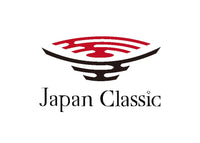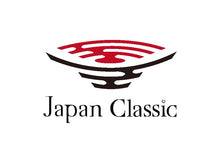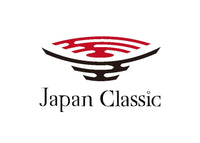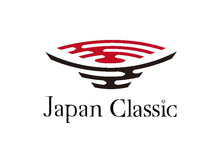【Vol.1】 Unraveling the History of Japanese Ceramics: A Millennium of Beauty and Craftsmanship
Japanese ceramics have evolved uniquely over a history spanning more than a thousand years, developing alongside the country’s culture. Behind this evolution lies the relentless effort of artisans and the diverse styles shaped by the natural environments of each region. In this article, we explore how Japanese ceramics have come to embody both “practicality” and “artistic expression.” We’ll also delve into the untold stories behind ceramics and the unique narratives shaped throughout history.
1. The Origins of Japanese Ceramics and the “Playfulness” of Jomon Pottery
The origins of Japanese ceramics can be traced back to the Jomon period (about 10,000 years ago). The “Jomon pottery” of this era was not only functional for cooking and storage but also carried decorative elements. This coexistence of “practicality” and “beauty” became a defining characteristic of Japanese ceramic culture.
What’s particularly fascinating about Jomon pottery is the “playfulness” that transcended mere practicality. Its intricate patterns and bold shapes reflect the spiritual world of the people of that time. This sense of playfulness remains an essential element passed down to modern ceramic artists.
Here is an example of Jomon pottery. The term “Jomon” refers to a period from approximately 13,000 to 10,000 BCE. The name comes from the cord patterns impressed on pottery during this time.
 The photo showcases one of the most famous examples, the flame-style pottery, celebrated for its dynamic and artistic design.
The photo showcases one of the most famous examples, the flame-style pottery, celebrated for its dynamic and artistic design.
2. Medieval Innovation: Artisans’ Challenges and Regional Identity
In the medieval period, Japanese ceramics rapidly evolved by blending “local materials” with “influences from abroad.” Particularly with the rise of the tea ceremony, ceramics transitioned from being mere utensils to tools that expressed the heart and spirit.
A hallmark of this era was artisans embedding their identity into their creations. For example, the following regions produced ceramics that reflected their unique local characteristics:
- Bizen ware (Okayama Prefecture): Known for its natural patterns created by soil and fire. It embodies a philosophy of “embracing imperfections.”
- Shino ware (Gifu Prefecture): Recognized for its white, soft-glazed surfaces and simple designs, it became a favorite among tea masters.
Artisans also maximized the use of natural local materials. The clay, glaze composition, and even the structure of the kilns varied by region, making the land itself an integral part of the art.
 Here are representative examples of Bizen and Shino ware. The first is Bizen ware, with its rounded shape exuding softness and warmth.
Here are representative examples of Bizen and Shino ware. The first is Bizen ware, with its rounded shape exuding softness and warmth.  The second is Shino ware, notable for its gentle white appearance. Tea masters, who place great importance on the tactile experience of tea bowls, would have appreciated the soft rim of this Shino ware, imagining its influence on the taste of tea.
The second is Shino ware, notable for its gentle white appearance. Tea masters, who place great importance on the tactile experience of tea bowls, would have appreciated the soft rim of this Shino ware, imagining its influence on the taste of tea.
3. Edo Period Exports: Japanese Ceramics on the Global Stage
During the Edo period, ceramics became widely used as everyday items within Japan, while also establishing a reputation as export-worthy craftsmanship. Arita ware, in particular, was exported to Europe through the Dutch East India Company, captivating many royal courts and aristocrats with its beauty.
What’s intriguing is how exported Arita ware influenced local European cultures. Elements of Japanese techniques and patterns were incorporated into European ceramic designs. This global appreciation turned Japanese ceramics into a vital part of the international art scene.
4. Modern Japanese Ceramics: Artisans’ Philosophy and New Challenges
Modern Japanese ceramics honor traditional techniques while embracing new technologies and designs. Noteworthy trends include:
- The Fusion of Handcraft and Sustainability: Efforts are being made to reduce waste during the ceramic-making process. Eco-friendly ceramics utilizing locally sourced and renewable materials are gaining attention.
- The Rise of Young Artists: Contemporary ceramic artists are pushing boundaries by incorporating minimalist designs and elements of pop art, captivating a new generation of ceramic enthusiasts.
5. Japanese Ceramics as a Reflection of “Time” and “Humanity”
Japanese ceramics tell “human stories” that vary by era and region. For instance, the flow of glaze and the cracks on the surface are influenced by factors such as temperature and humidity during production, as well as serendipitous occurrences during firing. All of these elements serve as records of a moment in time.
Moreover, because each piece is handmade, it retains traces of the artisan’s fingers and tools. These “marks” connect the user with the maker, creating a profound sense of intimacy.
Conclusion: More Than Just Ceramics
Japanese ceramics are more than mere utensils or decorations; they are “vessels of stories” that reflect time, place, and humanity. Understanding their background allows us to enrich our daily lives.
If you have the chance to hold a piece of Japanese pottery, look beyond its shape and color to the stories embedded within. These small “masterpieces” encapsulate over a thousand years of skill and heart.
At our online store, “Japan Classic,” we currently offer approximately 2,500 items, including handmade ceramics, glassware, and lacquerware. Each piece is uniquely crafted by artisans, ensuring no two items are identical. From traditional Japanese pottery to modern and sophisticated glassware, our carefully curated collection has something for everyone.
Japan Classic : https://www.japanclassic.shop/
Our site also provides a wealth of information, from expert knowledge on ceramics to innovative ideas for everyday use. Stay tuned for the next blog post!




Leave a comment